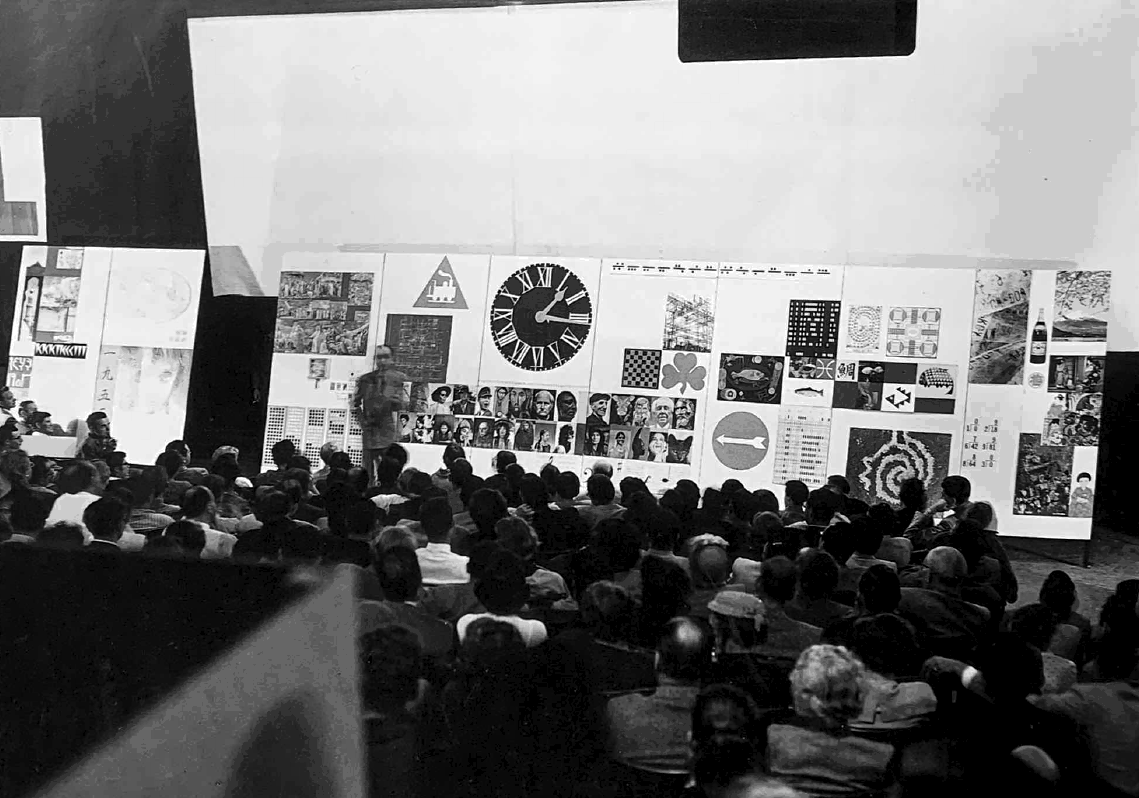You’ll recall from Week 1 (The bridges problem), Ralph Caplan describing The Eames Office's work with M.I.T.:
And the payoff is a connection. No arbitrary reward for good behavior, it is tied inextricably to the experience that generates it. This is why, when consulted by a Massachusetts Institute of Technology as to the best way to infuse their technologically heavy curriculum with art, the Eames rejected the idea of additional art courses or fine arts programs as “an aesthetic vitamin concentrate.” Instead they designed an alternative situation, a program for enriching the student‘s (and the university’s) communicative capabilities to the point where they could experience the aesthetic possibilities of their own discipline.

The situation they designed had two essential parts. The first called for each academic department to include a unit of teaching assistants whose first allegiance was to the departmental discipline but who also were gifted and trained in film, graphics, and writing. Their responsibility was to produce packets of current information that would keep everyone within the department aware of what was going on. The best of the packets would be made available outside the department, and the best of those would be distributed outside the university. Work done by these units was to be “insight motivated, arriving at as well as conveying insight)” thus precluding the creation of still another campus media center to prepare slides on demand from instructors who wished to beef up non-visual material. Not that no technical service center would be needed; clearly one would. But it would be designed to service the twenty-five or so professional units.
The beauty of the scheme is that it allows for the introduction of aesthetics as required for pleasure and communication, not just as another base to be touched before a student is home safe.
The second part would involve each student; for each, near the end of their M.I.T. career, would join one or two other students in teaching something of their major specialty to an elementary school class for a semester. The teaching could take the form of films, exhibits, lectures, games, models — whatever the team needed to make what they knew and understood meaningful to children. “...If the M.I.T. student is going to learn anything about art,” Eames argued, “they will learn it here.”
The entire design repudiates conventional approaches to the same goal. These mainly consist of three kinds of programs. One gives students massive doses of high art (no one gets a diploma without taking “appreciation” courses to guarantee that he has heard, if not listened to, Beethoven’s Ninth Symphony and looked at, if not seen, a Dutch Master or a reproduction of one). Another is an egalitarian attempt to “reach the student where they are” by running them through courses in rock and roll, horror movies, great graffiti of the sixties, etc. A third is the studio approach of encouraging the student to “do it themself” on the grounds that their “it” is as aesthetically valid as anyone else's. (It may be, but it is not as aesthetically rewarding.) The Eames design calls for appreciation through the experience of searching out the aesthetic character of the student’s own discipline. It also includes another favorite Eames idea: the university as a found object, a collection of traditions and facilities already on hand that can be transformed by fresh perception.
So then, your final project in five steps:
1. Ask yourself a question which has many equally correct answers. *
2. Answer the question by discovering and populating the multiplicity of valid responses. **
3. Organize your solutions. ***
4. Your result should be a well-formulated problem together with a multiplicity of possible answers. ****
5. Now, teach us (the class) your problem and its many answers. *****
* The problem can be anything but should be specific to your discipline. Philip also notes, “When I ask myself a question I don't usually know or worry about multiple, equally correct answers. I just aim for interesting questions and explore the space of variations along the way.”
** Consider the topological approaches we've studied: schematic diagramming, constructing a manifold in one or more dimensions, interpolating solutions, deforming solutions, flattening them out, etc.
*** It may be useful to refer to the three models of multiplicity that Italo Calvino offered: “as an encyclopedia, as a method of knowledge, and above all as a network of connections.” For more, see https://m-u-l-t-i-p-l-i-c-i-t-y.org/media/pdf/Multiplicity.pdf
**** For more on manifolds and multiplicities, see https://m-u-l-t-i-p-l-i-c-i-t-y.org/february-8
***** You will present your problem and project in the final class in April 26. See https://m-u-l-t-i-p-l-i-c-i-t-y.org/april-26